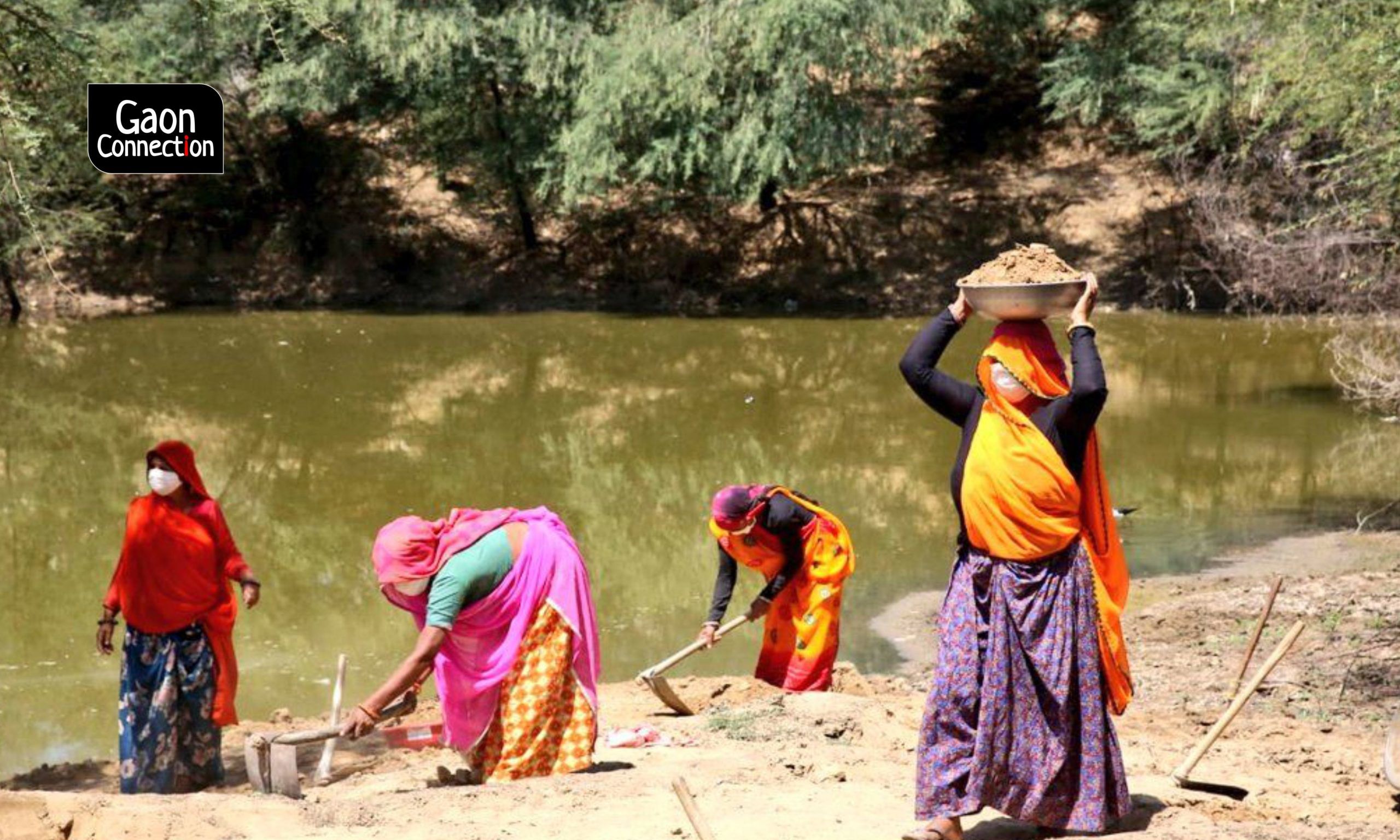MGNREGA (Mahatma Gandhi Employment Guarantee Act), the world’s largest employment guarantee scheme, has so far failed to provide work to 9.7 million households despite the record budget allocated to the scheme, according to ‘NREGA Tracker’, a recent report of the People’s Action for Employment Guarantee (PAEG). It also said that till November this year, 71 per cent of the funds (Rs 745.63 billion) had already been spent.
The PAEG is a group of activists, academicians and members of public organisations formed in 2004 to track the MIS (Management Information System) report of MGNREGA. MIS contains details of job cards, muster rolls and wage and material payments.
The report also said that despite applying for a job card for MGNREGA this year, 4.56 million households could not get job cards. While about 90 million job cards remained active, only about 1.9 million families across the country were able to complete 100 days of employment by November.
Under MGNREGA, every household in rural areas is guaranteed 100 days of employment a year, and every beneficiary rural family is provided with a job card that has the names of all its adult members who can work under MGNREGA.
Sandeep Bhuiyan, a resident of Sahedih village in Palamu district of Jharkhand, has finally been provided work under MGNREGA, but his family had to struggle a lot for it. Bhuiyan told Gaon Connection that he lives “in a village with 20 to 25 labourers, but we waited for two to three months. We want work under MGNREGA”.
Many villagers across the country have not been able to get employment under MGNREGA, despite huge demand for work. The PAEG report revealed that in the country’s largest state of Uttar Pradesh, more than 250,000 villagers applying for employment under MGNREGA could not secure even a single day’s work.
Similarly, 685,000 people in Odisha, 892,000 in Bihar and 892,000 in Madhya Pradesh applied for work under MGNREGA. But, till November, more than 9.7 million rural households across the country could not get work in MGNREGA, the report said.
The PAEG report also revealed that till November, only 1.9 million households across the country had been able to get 100 days of employment, as against 4 million the previous year. “These figures indicate the huge demand for employment in MGNREGA,” Debmalya Nandi, who has been associated with the PAEG report and MGNREGA workers, told Gaon Connection.
“In view of the demand for work, and comparing it to the previous year, this figure should have exceeded four million households. Despite the raging demand for work, state governments could not fully realise the potential of MGNREGA,” said Nandi.
NREGA Tracker also revealed that pending payment of wages and materials was Rs 95.9 billion (Rs 9,590 crore) or 9.1 per cent of the total outlay. The amount allocated to many states has already been used up.
Nandi said many states were running short of MGNREGA funds, which was also a major reason why people could not get employment despite huge demand for work. “Initially, the Centre provided a huge budget for MGNREGA, but gradually the scheme came to be largely overlooked. This was despite the fact that in some states, a large number of people worked for the first time in MGNREGA,” he explained.
Nandi felt the government should have given more emphasis to MGNREGA during the COVID-19 crisis. “There are still 100 days left [for the2020-2021 fiscal] and the demand for work under MGNREGA is bound to rise during February and March, so it is imperative that the government increases the MGNREGA budget at the rural level,” he added.


















